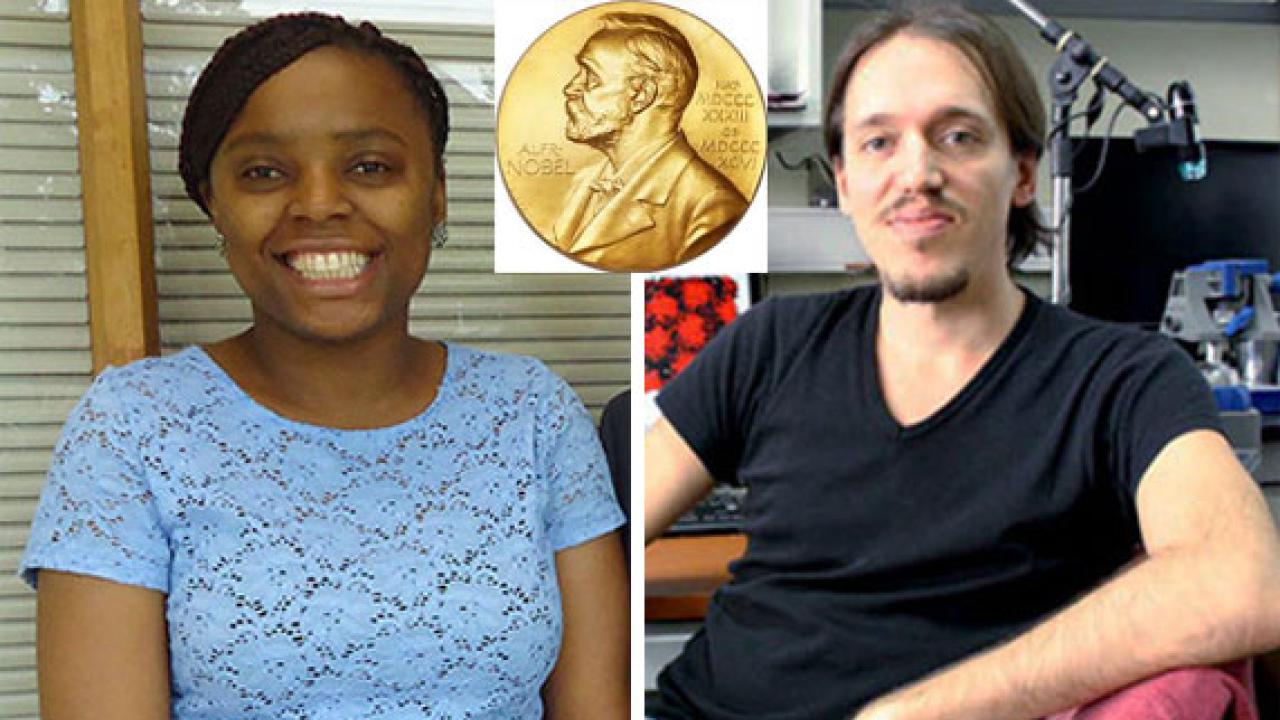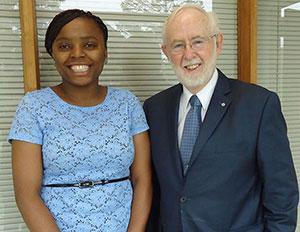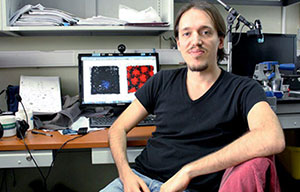
As an international hub for research and education, ICTP has hosted thousands of visiting scientists from around the world, including more than 100 Nobel Laureates. Research at ICTP has contributed directly, or indirectly, to at least four Nobel Prizes. These include:
- ICTP founder Abdus Salam's award in 1979 for his contribution to the theory of the unified weak and electromagnetic interaction between elementary particles;
- the heavy involvement of Filippo Giorgi, head of ICTP's Earth System Physics section, with the Intergovernmental Panel on Climate Change, which shared the 2007 Nobel Peace Prize;
- ICTP's contribution, led by Bobby Acharya of the Centre's High Energy Physics section, to CERN's Atlas experiment, which helped confirm the existence of the Higgs Boson that had been theorized by François Englert and Peter W. Higgs, who shared the 2013 Nobel Prize in Physics;
- the theoretical work on neutrino oscillation by ICTP scientist Alexei Smirnov and colleagues, which was confirmed by one of the recipients of the 2015 Nobel Prize in Physics, Arthur McDonald.
The benefits of ICTP's Nobel connections often extend--directly or indirectly--to its young researchers. Recently, ICTP spoke to two such physicists: a former Diploma student who counted among her PhD supervisory committee a Nobel Laureate; and an ICTP Associate whose collaboration with two Nobel Laureates culminated in a recent Nature publication.
From Cameroon to Canada
| Alvine Kamaha with Nobel Laureate Arthur McDonald |
Nobel Laureate Arthur McDonald had visited ICTP in 2009 to meet with Alexei Smirnov and give a lecture. His visit proved to be serendipitous for a young physics student from Cameroon, Alvine Kamaha. Kamaha was a Postgraduate Diploma student at the time with a fascination in neutrino physics, thanks to courses taught by Smirnov and ICTP physicist Goran Senjanovic. She yearned to pursue doctoral studies in the field, and had asked Smirnov--her Diploma thesis supervisor--for recommendations on a good group working on neutrino physics.
"He told me he had a friend, an acquaintance in Canada (talking about Professor McDonald), that I could try to apply to Queens University," recounts Kamaha. She continues, "I applied with Smirnov's help. A few weeks after I submitted my application Smirnov told me, oh by the way, McDonald is coming to ICTP for a lecture, it might be a good time to meet him. At the same time, I got a response from McDonald saying that he was coming to Italy and asking if I wanted to have an interview at that time, and I said OK. The interview went well, and I was admitted into the PhD programme there, where the work is on experimental particle physics."
Kamaha completed her PhD in early 2015 (McDonald served on her supervisory committee ) and has remained at Queens University for postdoctoral research. She works on an experiment called New Experiments with Spheres, which uses gaseous spherical detectors to hunt for very-low-mass dark matter. She plans to return to Cameroon someday to share her theoretical and experimental knowledge of subatomic particles and encourage others to study the field, in spite of the lack of experimentally resources in her home country. "I want to let students know that although we don't have the means to build some fancy big detectors to track subatomic particles, we can contribute as part of an international collaboration."
She credits her time at ICTP for opening up new research horizons for her. "If I did not go to ICTP, then I would not have done neutrino physics, because there was no way I would have encountered this in Cameroon," she explains. "ICTP gave me the platform to learn something new, and the platform to move forward and to continue, because from there I realized that you don't really need to be an expert in something to start, you just need the motivation and the interest."
Channeling Your Inner GPS
| ICTP Associate Emilio Kropff |
In 2014, May-Britt Moser and Edvard I. Moser shared the Nobel Prize in Physiology or Medicine (along with John O'Keefe) "for their discoveries of cells that constitute a positioning system in the brain". The cells discovered by the Mosers, called "grid cells", make up a coordinate system in the brain's hippocampus that is used for spatial navigation.
Their research has been highly influential on ICTP Associate Emilio Kropff, a neuroscientist from Argentina who is interested in memory and spatial navigation. Kropff did postdoctoral work with the Mosers at their laboratory at the Norwegian University of Science and Technology. Under their supervision, Kropff investigated how the brains of rats process the speed at which they travel to update their internal location map.
"This is a very interesting mechanism that was proposed a long time ago, because people saw that rats can actually do this type of path integration: updating your own position in an internal map using only cues that have to do with your own movements," explains Kropff.
The research required that Kropff and his colleagues create some way to ensure that the rats in the experiments maintained a steady speed so that they could study the speed response of brain cells. One proposal was to move the rats around in cars. "The problem is that spatial maps don't work very well when the rat is passively sitting in a car, they turn off or get irregular," Kropff says.
Their solution? "We invented the 'Flintstone car', a car that is driven by a computer but has no floor," Kropff says, adding, "The animal has to follow the car, and they do it very willingly because they know that at the end of the track they are going to get a reward, which is the same kind of reward they get when they run freely."
With the ability to control the speed of the rats, Kropff and his colleagues discovered a correlation between neuron activity and speed. A paper on their results, with Kropff as first author, appeared in the 15 July 2015 edition of Nature and is titled "Speed cells in the medial entorhinal cortex".
Kropff considers himself fortunate to have had the opportunity to study with the Mosers. "One of the things that I learned from them is that you have to be very humble in science; they are some of the most humble scientists I know, while they are at the same time among the best scientists I know."
During the visits to ICTP's Trieste campus that he is entitled to as an Associate, Kropff is working with the Centre's Quantitative Life Sciences section and with a researcher at SISSA to develop a model about a part of the hippocampus where new neurons are born in adult animals.


















